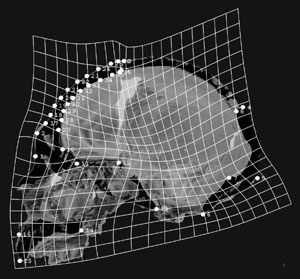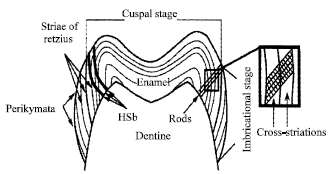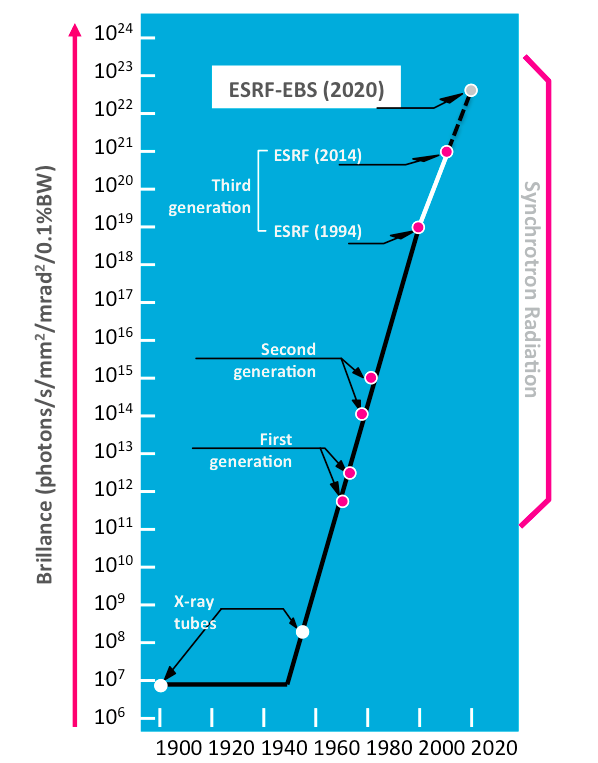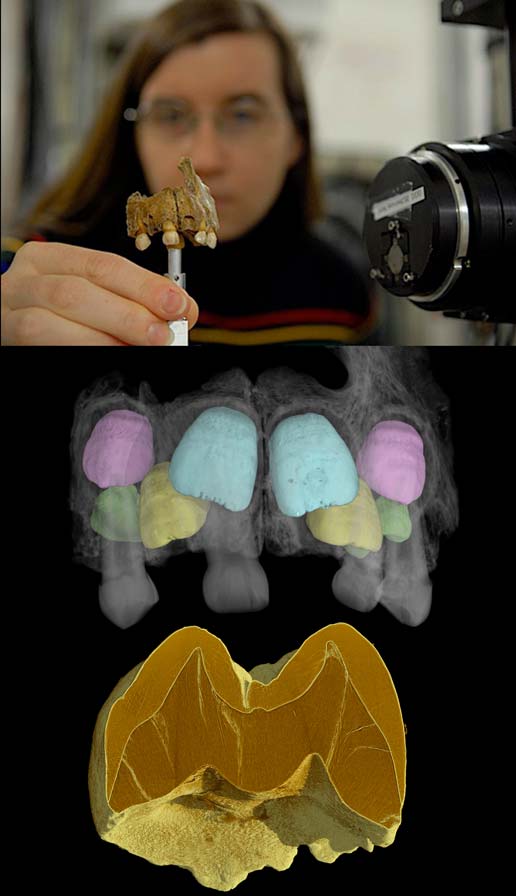Growth Rates of Ancient Humans and Atomic Physics
The modification of growth rates from birth to adulthood is an important distinction between apes like chimpanzees and humans. The brain growth of apes are fast before birth and slows down afterwards, while brain growth in human babies continues to be rapid after birth.
At birth, human babies have brain that are 33% larger than ape babies (normalized by body mass), but by adulthood the brain size of humans is 3 times as large as apes. This additional growth means humans go through a much extended period of immaturity compared to apes.
Apes have an
infancy of five years followed by an adolescence of seven years and then adulthood.
Humans however have two extra phases. Humans have an infancy of three years, childhood from three to seven years, a juvenile phase between seven and ten years and then an adolescence of seven years.
Thus apes are adult at twelve years while humans become adult at seventeen. This extended pre-adult phase allows human brains both to grow (till 8th birthday) and connect up (that continues till age 20) to absorb and adapt to more complex social life of a human group.
An important question in evolution therefore is how this change in the rates and phases of growth proceeded along the hominid lineage?
One way to estimate it is to compare the age of eruption of molars.
In chimpanzee, molar teeth erupts at 3,6 and 10 years. In humans in contrast, the same set erupts at 6,12 and 18 years. Studies have shown that by the time of Homo ergaster, the childhood of hominids have already started to extend. Their molars were erupting probably at 5,9 and 15 years.
But teeth also preserve a finer level of detail.
Teeth have the equivalent of tree rings. These very thin lines of teeth enamel are deposited every day. These incremental lines are called cross striations and they can be used to date the teeth since it's eruption.
Biorhythms (Part One): Why Teeth are like Tree Rings and Ticking Clocks
The problem with this is that the teeth would have to be cut open to reveal these cross striations. And this where one of the most powerful X ray facility in the world comes in.
Teeth, the hardest bones in the world are really tough to X-ray. But
European Synchrotron Research Facility in France, housing the world's most powerful X-ray beam is upto the task.
About Us
The ESRF - The European Synchrotron Radiation Facility - is the most intense source of synchrotron-generated light, producing
X-rays 100 billion times brighter than the X-rays used in hospitals. These X-rays, endowed with exceptional properties, are produced at the ESRF by the high energy electrons that race around the storage ring, a circular tunnel measuring 844 metres in circumference.Thanks to the brilliance and quality of its X-rays, the ESRF functions like a "super-microscope" which "films" the position and motion of atoms in condensed and living matter, and reveals the structure of matter in all its beauty and complexity.
The ESRF produces X-rays of high energy, called “
hard” X-rays, which have wavelengths of 0.10 to 0.01 nm or energies in the range 10 to 120 keV. (In synchrotron science, it is more usual to speak of energies.) Because of their higher energies, hard X-rays penetrate deeper into matter than soft X-rays, those with energies below 10 keV. The synchrotron X-ray beam can have other valuable properties, including time structure (a flashing beam), coherence (a parallel beam) and polarisation.
In addition to being absorbed by a material, X-rays can also interact with the atoms, giving rise to diffraction or scattering of the X-rays. X-ray absorption can also be followed by re-emission of the energy absorbed, for example as fluorescence. These interactions with matter are used to gain information about the composition of a sample, including the type and location of individual atoms within it.
In 2012 a large sample of Neanderthal and human teeth were put under this X ray beam to image the daily lines of the teeth and hence to determine the ages and rate of growth of Modern humans compacted to Neanderthals.
http://www.sciencemag.org/news/2010/11/neandertal-children-developed-fast-track
Fortunately, Smith and Hublin found a powerful new tool that would let them "see" inside fossil teeth without damaging them—the 52 kilo-electron-volt synchrotron
x-ray beam at the European Synchrotron Radiation Facility (ESRF). Working with paleontologist Paul Tafforeau of ESRF, the
multinational team used the beam to x-ray teeth from dozens of Neandertals, including 11 juveniles, and several fossil H. sapiens. By counting daily growth lines laid down in the enamel and comparing the number of days that passed between birth and key developmental events, such as the eruption of the first, second, and third molars, the researchers could calculate the age at death as well as the rate of dental growth.
State-of-the-art synchrotron imaging of the tiny upper jaw (maxilla) of the Engis 2 Neanderthal allows scientists to virtually isolate the permanent teeth inside the bone (center image), count tiny growth lines inside the first molar teeth (lower image), and determine that it died at age 3. Fossil courtesy of the Université de Liège. Photo credits Graham Chedd (PBS), Paul Tafforeau (ESRF), and Tanya Smith (Harvard University and MPI-EVA).
They found that it took the Neandertals 2.5 years to form their first molar crowns, compared with 3 years on average in modern humans. Second molars appeared by age 8 in Neandertals, and 10 to 12 years on average in modern humans. This suggests that Neandertals reached adulthood a few years earlier than modern humans, they report online today in the
Proceedings of the National Academy of Sciences.
Key findings of the associated papers were as follows:-
"Data from many fossils were quantified and analyzed, and nine Neanderthals at different stages of maturity were synchrotroned. These were then compared with similar analyses on five early moderns and a large sample of recent people from different regions. The results seem to finally establish that early moderns such as those from Skhul and Qafzeh were maturing dentally at the slow rate of recent humans, while the Neanderthals were growing somewhat faster, particularly in the case of the later erupting teeth.
Thus, for example, the Neanderthal children from Engis, Scladina, and Le Moustier should have been about four, eleven, and sixteen years old respectively from modern development patterns, but the synchrotron showed that they were actually about three, eight, and twelve. Not only were the Neanderthals maturing faster, but the more rapid growth of their molars meant that these teeth had thinner enamel than ours."
-
Chris Stringer in " Lone Survivors"
Thus Neanderthals were still maturing faster than modern humans by about four years even though they had comparable brain size. This suggests a faster more energy demanding childhood and lesser time for the brain to retain flexibility and adapt to the society through rewiring. These considerations have large implications on how fast Neanderthals can innovate new things or adapt to changes and also how many children a single mother can simultaneously raise to maturity.
In this way scientists were able to extract vital information of the life history differences between Neanderthals and modern humans using combined knowledge of archaeology, biology and the tools of 21st century atomic physics.







